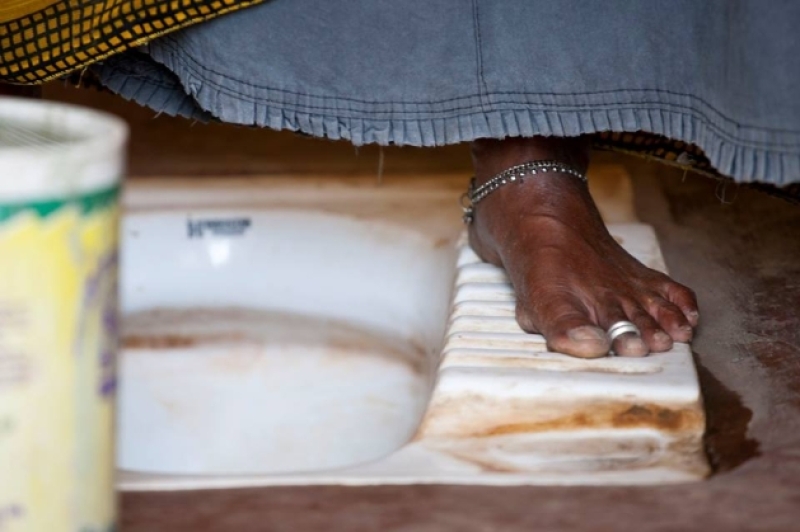- Tarique Calls for United Effort to Build a Safe Bangladesh |
- Tarique leaves for 300 feet area from airport |
- BNP top leaders welcome Tarique Rahman on homecoming |
- Flight carrying Tarique, family lands in Dhaka |
- Red bus with ‘Bangladesh first’ slogan ready at Dhaka airport for Tarique |
Never Disparage a Toilet

Photo courtesy- Shelter Associates
By Baher Kamal
MADRID, Nov 26 2024 (IPS) - In most Western European countries you can purchase –or rent- a 60 square-metres flat that is equipped with two toilets, one for her and one for him. Larger apartments may feature even more.
For those who can afford it, such facilities are taken for granted. Yet, nearly half the global population—over 3.5 billion people—live without access to safely managed sanitation, including 419 million forced to practice open defecation.
The Hidden Reality of Open Defecation
The consequences of open defecation are stark. Human waste contaminates rivers and groundwater—often the primary sources of drinking, cooking, and bathing water in impoverished regions. It pollutes the air and fuels the spread of deadly diseases like cholera and malaria.
For women and adolescent girls, the lack of sanitation also brings added challenges. Without hygienic facilities, they face health risks and societal stigma, particularly during menstruation, with nowhere to manage this basic need in privacy.
Global Promises, Limited Progress
Year after year, the world’s largest multilateral system – the United Nations, tries to draw attention to the dangers of the lack of such an essential sanitation service. And so it does once and again on the occasion of the 2024 World Toilet Day.
These dangers are one of the main sources of concern and worry of at latest 30 specialised bodies grouped in the international system.
Such is the case of the World Health Organization (WHO), the UN Children Fund (UNICEF), the UN Women, among many others, let alone the UN-Water which coordinates the United Nations’ work on water and sanitation.
Politicians promised that by 2030, they would achieve access to adequate and equitable sanitation and hygiene for all and end open defecation, paying special attention to the needs of women and girls and those in vulnerable situations.
This promise is part of the Sustainable Development Goals (SDGs).
Yet another unmet promise
Nevertheless, “the world is alarmingly off-track to deliver sanitation for all by 2030.”
The evidence is sobering:
• Nearly half the world’s population, 3.5 billion people, use sanitation services that leave human waste untreated, jeopardizing human and environmental health.
• Of those, 419 million lack any toilet and practice open defecation.
• An estimated 367 million school-age children attend schools without toilets.
• Only 32% of forcibly displaced people have basic sanitation access.
At the current pace, sanitation for all won’t become a reality until the 22nd century, warns the World Health Organization.
Also this year, the whole UN system recalls that ‘Safe toilets for all by 2030’ is one of the targets of Sustainable Development Goal 6 . However, “the world is seriously off track.”
Indeed, this goal is among the 17 SDGs which were adopted nearly a decade ago by all members of the United Nations.
Also Toilets Are Under Threat
Yes, as armed conflicts, extreme weather events and disasters can destroy, damage or disrupt sanitation services. Here go some of the consequences:
“When toilet systems don’t work – or don’t exist – untreated human waste spreads in the environment, unleashing deadly diseases such as cholera,” warns the United Nations.
– Unsafe water, sanitation and hygiene are responsible for the deaths of around 1,000 children under five every day. (WHO, 2023)
– Children who live in extremely fragile contexts are three times more likely to practise open defecation, four times more likely to lack basic sanitation services and eight times more likely to lack basic drinking water services. (UNICEF, 2024).
Obviously the citizens living in industrialised countries are not to be blamed for having toilets… not at all. Rather, good for them.
But what about the decision-makers?

